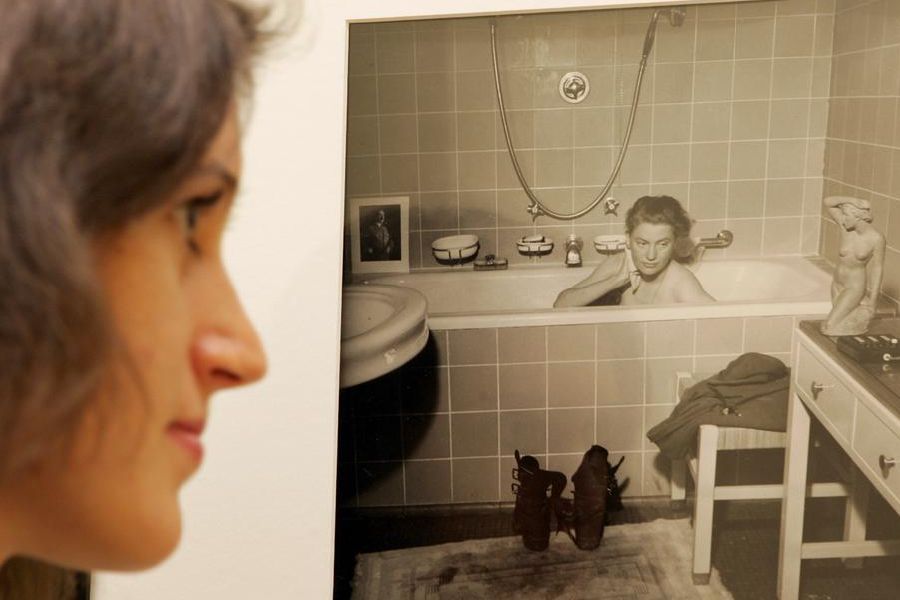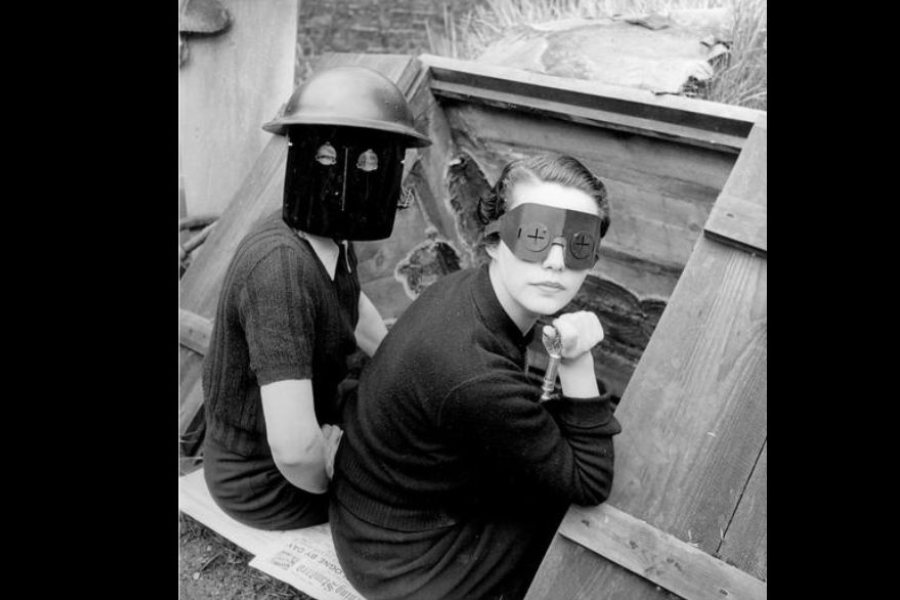Born in Poughkeepsie, New York in 1907, Elizabeth "Lee" Miller showed early interest in the arts and in Europe, moving to Paris at age 18 to study lighting, costume and design at a theater school. A year later, she moved to New York City, studying theater, drawing and painting.
The accidental model
Soon after, she became one of the most sought-after models in New York, purely by accident, when Conde Nast, the publisher of "Vogue" magazine, prevented her from getting run over by a car. But Miller quickly tired of modeling, and was far more interested in taking photographs herself.

Lee Miller started modeling in the late 1920s, posing for legendary photographers such as Edward Steichen and George Huyningen-Huene Deutsche Welle
Surrealism's golden couple
In 1929, she returned to Paris, where she became the student, muse, lover and collaborator of the artist and photographer Man Ray. Together, they made the technique of solarization — used here in this portrait of Miller made by Ray — one of their aesthetic trademarks. Miller set up her own photographic studio and established herself as an artist.

Man Ray and Lee Miller collaborated with and inspired each other, and were both hugely influential influences on surrealist art Deutsche Welle
Making art in the desert
After leaving Man Ray, Miller married her first husband, Egyptian businessman Aziz Eloui Bey, in 1934 and moved with him to Cairo. There, she applied her surrealism-trained eye to photographing the natural landscape of Egypt, resulting in some of her best-known artworks like this photo, "Portrait of Space."
War photography through a surrealist's eye
In 1937, Miller returned to Paris, where she met her second husband, the British surrealist painter Roland Penrose, with whom she later had a son. The couple settled in London, and with the outbreak of the Second World War, Miller decided to put her photographic skills to use as a war correspondent for "Vogue" magazine. She traveled through England and Europe and was at the frontlines, the only woman photographer granted permission to travel independently in the war zones. The photos she took during this period merged photojournalism with art, as her surrealist sensibilities informed the framing of her shots.

Lee Miller, 'Portrait of Space,' Egypt, 1937 Deutsche Welle

Lee Miller, 'Auxiliary Territorial Service searchlight operators,' North London, 1943 Deutsche Welle

30th of April 1945: Miller photographed herself bathing in the Führer's bathtub, her muddy boots on the bathmat Deutsche Welle
The woman in Hitler's bathtub
She was also praised for picking out small moments that a man might have missed. One of her most famous photos shows her bathing in Hitler’s bathtub in Munich on the same day the Nazi dictator committed suicide in Berlin. She was billeted in Hitler's Munich apartment after documenting the liberated Dachau concentration camp.
Miller was motivated by empathy more than a desire to aestheticize, and her photos of the death and destruction und human suffering she witnessed retain their shocking power more than seven decades later.
Pals with Picasso
Lee Miller shared close friendships with several of her fellow artists, including Pablo Picasso. She took nearly 1,000 photos of him during the four decades they knew each other, and he painted her six times. Miller’s son, Antony Penrose, has written a children’s book about his childhood experiences with the artist, titled, "The Boy Who Bit Picasso." This photo by Miller of the two was taken at Picasso’s studio in Paris shortly after the liberation of the city by Allied forces.

Lee Miller, 'Picasso and Lee Miller in his studio,' Paris, 1944 Deutsche Welle

Lee Miller, 'Remington Silent,' London, 1940 Deutsche Welle
A farewell to photojournalism
Miller remained deeply affected by what she saw and documented during the war, and suffered from depression and alcoholism after returning to England. She eventually gave up photography, turning her creativity to cooking gourmet meals for her friends and family.
Lee Miller died of cancer at the age of 70 in 1977. Her trailblazing influence and legacy, both as an artist and a war reporter, have earned her an important place in the history of 20th century photography. The Bucerius Kunst Forum in Hamburg is now dedicating a retrospective to this remarkable photographer.










